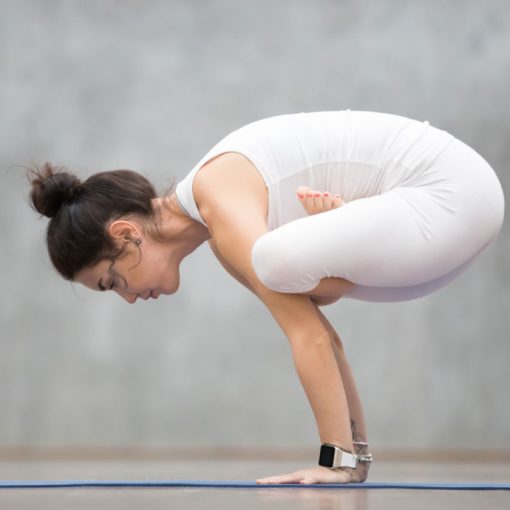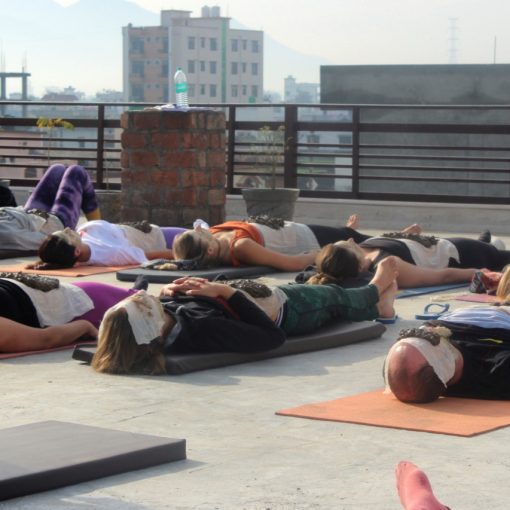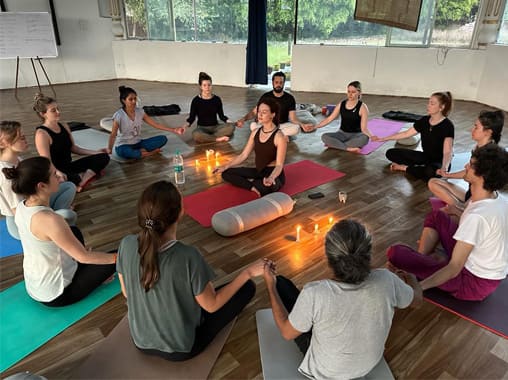Downward Dog Pose, known as Adho Mukha Svanasana in Sanskrit, is one of the most recognized and widely practiced yoga poses. It is a foundational posture in many yoga styles, offering a combination of strength, stretch, and relaxation. This pose resembles the stretch a dog performs when waking up, hence its name. In this article, we will explore how to practice Downward Dog Pose, its benefits, and tips to enhance your practice.

How to Practice Downward Dog Pose
1. Start on All Fours
- Get into a tabletop position with your hands directly under your shoulders and your knees directly under your hips. Spread your fingers wide, pressing firmly into the mat with your palms.
2. Tuck Your Toes
- Curl your toes under and press through your hands to lift your knees off the mat. Keep your legs straight without locking your knees to form an inverted “V” shape with your body.
3. Align Your Body
- Position your hands shoulder-width apart and your feet hip-width apart for optimal form and stability. Press your chest gently towards your thighs to lengthen your spine. Keep your head between your upper arms, align your ears with your upper arms, and gaze towards your navel or between your feet.
4. Engage Your Core and Legs
- Activate your core muscles by pulling your navel in towards your spine. Press your heels towards the mat, feeling a stretch in your hamstrings and calves. Your heels may not touch the ground, which is normal, especially for beginners.
5. Hold the Pose
- Hold the position for 5 to 10 breaths, or longer if comfortable. Focus on deep, steady breathing, maintaining the alignment and engagement of your body.
6. Release the Pose
- To experience relief, simply and gently lower your knees back to the mat and find your way back to the tabletop position. You can also move into Child’s Pose (Balasana) to rest.
Tips for Practicing Downward Dog Pose
- Keep Your Spine Long: Avoid rounding your back by focusing on lengthening your spine. Imagine your tailbone lifting towards the ceiling while your head moves towards the floor.
- Modify for Flexibility: If you have tight hamstrings or calves, bend your knees slightly and keep your heels lifted. This modification helps maintain the length in your spine without straining your legs.
- Use Props: Beginners or those with wrist discomfort can use yoga blocks under their hands to reduce the pressure on the wrists and help maintain proper alignment.
- Warm-Up: Incorporate a warm-up routine with gentle stretches or poses like Cat-Cow (Marjaryasana-Bitilasana) to prepare your body for Downward Dog.
Benefits of Downward Dog Pose
1. Strengthens and Tones the Body
Engage multiple muscle groups, such as the arms, shoulders, core, and legs. Regular practice helps build strength and endurance, particularly in the upper body, which is essential for more advanced poses.
2. Improves Flexibility
This pose provides a deep stretch for the hamstrings, calves, and back muscles. Over time, it enhances flexibility, particularly in the posterior chain (the back side of the body). It also opens the shoulders and chest, improving overall mobility.
3. Enhances Circulation
As an inversion pose, where the heart is above the head, the Downward Dog encourages blood flow to the brain. This increased circulation can help reduce fatigue, rejuvenate the mind, and promote a sense of calm and clarity.
4. Relieves Stress and Tension
The mild inversion and stretching in Downward Dog have a calming effect on the nervous system. It can help alleviate stress, anxiety, and tension, making it an excellent pose for relaxation and mental clarity.
5. Improves Posture
Regular practice of Downward Dog helps counteract the effects of poor posture, especially in the upper body. By strengthening the muscles around the spine and shoulders, this pose encourages better alignment and posture in daily activities.
6. Supports Spinal Health
The elongation of the spine in this pose helps to decompress the vertebrae, relieving pressure on the discs. This is especially beneficial for people with back pain or those who spend long hours sitting.
7. Boosts Digestion
The mild compression of the abdominal organs in Downward Dog can stimulate digestion and improve the functioning of the digestive system. It’s a gentle way to massage the internal organs, promoting overall digestive health.
8. Prepares the Body for Advanced Poses
Downward Dog is often used as a transitional pose in various yoga sequences, such as Sun Salutations. It prepares the body for more advanced postures by building strength, flexibility, and body awareness.
Common Mistakes and How to Avoid Them
- Rounding the Back: This often happens when there’s tightness in the hamstrings or shoulders. Focus on bending your knees slightly and lengthening your spine instead of trying to straighten your legs completely.
- Collapsed Shoulders: Keep your shoulders active by externally rotating your upper arms and pressing firmly into the mat with your hands.
- Locked Knees: Avoid locking your knees to prevent unnecessary strain. Keeping a slight bend in the knees is better for maintaining proper alignment.
- Lack of Engagement in the Core: Without engaging the core, you may strain your lower back. Keep your core muscles engaged to protect and support your spine.
Conclusion
Downward Dog Pose is a versatile and beneficial pose that forms the cornerstone of many yoga practices. Whether you’re a beginner or an experienced practitioner, Adho Mukha Svanasana offers a range of physical and mental benefits that enhance your overall well-being. By incorporating this pose into your routine, you can build strength, improve flexibility, and cultivate a sense of calm and focus. Remember to practice mindfully, paying attention to your body’s alignment and breathing, to fully enjoy the benefits of this powerful pose.





